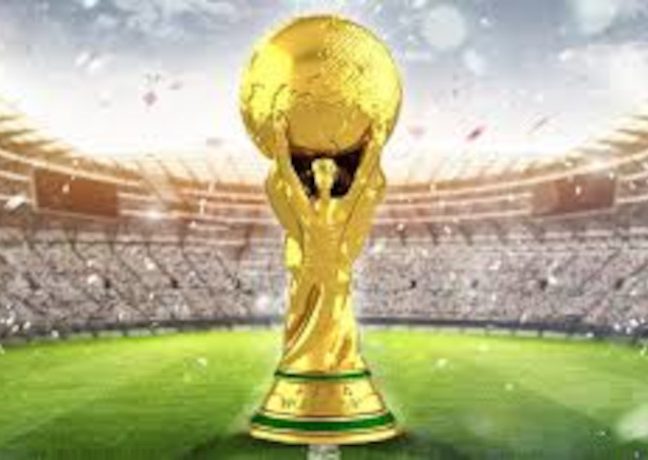
More Despicable People and the World Cup (Part One) The Successor
January 5, 2021
More Despicable People and the World Cup (Part Three) Consequences
January 5, 2021by Satish Sekar © Satish Sekar (December 28th 2020)
The Fix
The match between Perú and Argentina in the 1978 World Cup is one of the most talked about and scandalous in the history of the World Cup – football even. Argentina won 6-0, amid accusations of bribery: corruption, intimidation or worse.
There were even accusations that Perúvian players were threatened by Videla’s cronies at half time. Why were they even allowed into Perú’s dressing room?
And Perú’s Argentina-born goalkeeper Ramón Quiroga was just added to the perception of a fix. Was all this just coincidence? Were the events that followed it coincidence too? The aid package and more. It certainly smelt fishy – a quid pro quo – but although nothing has ever been conclusively proved for decades.
Quiroga even issued a denial but few believed it. Argentinean striker Leopoldo Luque performed well in the whole tournament and he has suspicions that he didn’t win the World Cup fair and square – the doubts robbed him of the joy he would have felt and wanted to feel about that triumph.
Whether Argentina’s win was ‘dirty’ or not Ricardo Villa is certain that the players were used by the junta too. Videla and his cronies were capable of this fix and a lot worse.
The dismal second-half performance displayed by Perú caused many to believe that it was an absolutely blatant case of match-fixing. It may well have been. Circumstantial cases have been won on a lot less evidence than this. And more would emerge as time passed.
‘Innocent’ Victims
The major players in the fix – victims, perpetrators and ‘facilitators’ – had something in common that is largely missed in discussions on it. Argentina was ruled at the time by one of the most brutal dictatorships ever seen in that country. Brasil was also ruled by a military dictatorship and to complete the trio, so was Perú.
None of these ‘governments’ respected human rights or democracy. They were vicious murderers – there were no good guys in this scenario – but all three knew the power of football. All three wanted to taste success and its benefits, but one was far weaker than the others.
A Vulnerable Dictatorship
The Perúvian dictatorship, like its players, was vulnerable to pressure. The Perúvian economy was weak. Badly needed assets were frozen in Argentina. Perúvian dissidents in Argentina were a convenient bargaining chip and food was another.
It had been just three years since the fall of General Juan Velasco Alavardo’s government. Velasco came to power in a coup d’état in 1968 – he left the same way seven years later, dying in 1977.
Velasco seized power from President Fernando Belaúnde Terry after a series of disputes and attempted coups threatened another. Velasco had led a bloodless coup in 1968 – the left-wing General became a dictator. Ill and facing a declining economy Velasco surrendered power in a bloodless coup.
He was replaced by General Francisco Morales-Bermúdez Cerruti. While governing as the second President of the Revolutionary Government of the Armed Forces, the revolutionary phase was over. Morales-Bermúdez pursued economic and political policies far more in tune with dictators.
Five years later, facing the same problems as his predecessor, Morales-Bermúdez surrendered power. Perú came full circle as the man deposed by the coup of the Revolutionary Government of the Armed Forces became President of Perú once more.
Vile, Viler and Vilest
Morales-Bermúdez is the oldest living former President of Perú. His reputation recently took a deserved hit. His government had been accused of profiting from the World Cup ‘fix’ previously, but worse would follow – far worse.
In 1978 Bermúdez benefited from the Fix. His economic policies were failing. Argentinean banks released $50m of Perúvian assets and several tonnes of food (wheat) was sent to Perú shortly after the ‘fix.’ But there was worse. Videla and his cronies were unrivalled in monstrous acts, despite their claims that it was just the jealousy of rivals.
Perúvian dissidents who were a thorn in Morales-Bermúdez’ side. There was a solution – bestial one. Thirteen dissidents were ‘rendered’ to Argentina before that term was coined. They were subjected to the ‘tender mercies’ of Videla’s thugs. In return Perú agreed to throw the match, so Argentina could progress in the tournament and Videla could have the victory he craved.
That was the sinister deal that former Perúvian Senator Genaro Ledesma detailed to an Argentinean court in 2012. Whether there was a ‘fix’ or not, it cannot be disputed that Perú’s dictator received much-needed assistance from Videla’s dictatorship when he needed it most. Further investigations in Perú in 2015 verified Ledesma’s claims, and he should know. He was one of the 13 rendered prisoners, which included: Ricardo Napurí Schapiro, Ricardo Letts Colmenares, Javier Diez Canseco, Hugo Blanco, Justiniano Apaza, Guillermo Faura Gaig and the journalist Alfonso Baella Tuesta.
The international outcry at the time saved their lives, forcing Videla to release them and deport them to México or Europe. So, Videla got his fixed result without having to do Morales-Bermúdez’ dirty work.
In 2017 Morales-Bermúdez hollow denials of involvement in atrocities was exposed as he was convicted in Italy in absentia of crimes associated with the notorious Operation Condor and sentenced to life imprisonment. The sentence was confirmed in 2019.
Quite simply, the ‘fix’ reeked of a dastardly deal.


